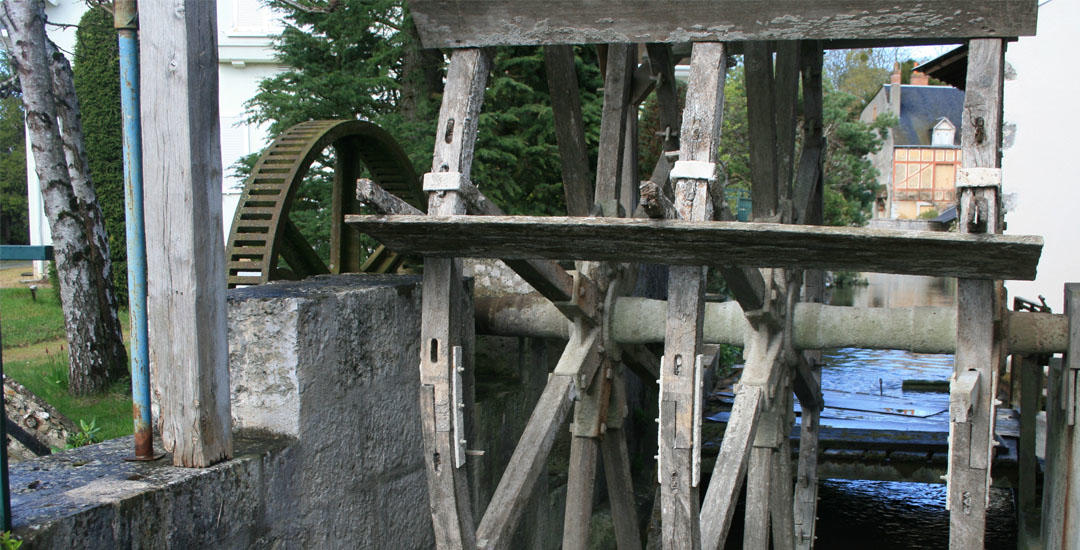- Home
- Know
- A la carte
- Orléans - Blois
- The mills of Meung-sur-Loire
The mills of Meung-sur-Loire
Published on 13 April 2017 - Updated 16 November 2018
To the north of the railways up towards Meung-sur-Loire you can see watermills.

To the north of the railways up towards Meung-sur-Loire you can see watermills.
Water truly was the driving force for the town’s development… not only the water from the River Loire, where the port was located, but also the water from the River Mauves, which starts as springs and began to be canalised in around 500 AD. The bishops of Orléans, the lords of the town, furthered the drainage of the River Mauves to form three main rivers which converge in the town before joining the River Loire. Watermills were therefore set up very early on, from the 12th century onwards, and they continued to work until the 1950s. There were 28 of them before the French Revolution.
Initially, the mills were for flour as Meung-sur-Loire benefitted from the large grain fields of the Beauce region. Wheat was transported from this region along the river and mainly sold in Orléans, before being transported to the markets by donkeys. Oral tradition tells how, during the Hundred Years’ War, the Magdunois, the inhabitants of Meung, brought flour to the starving inhabitants of Orléans during the siege and were greeted by cries of “Here come the Meung asses!”, to which the Magdunois retorted: “Asses might pass by Meung but they don’t hang around long…”
Due to the technical developments during the Middle Ages, there were new types of mills by the end of the period producing gun powder, paper pulp for the University of Orléans, as well as saltpetre and fulling mills. Water was needed for the numerous tanneries which flourished along the riverbanks with the bark mills, which ground oak bark in order to obtain tannin. A corporation of tanners and leather curriers developed and supplied the local cobblers with fine leathers. Weavers also multiplied and all these trades can still be seen reflected in the town’s road names. The majority of the mills disappeared due to the ups and downs of history but they also contributed to the maintenance of the waterways. Nowadays, the ones which remain enrich the town’s heritage. These days there’s only one mill in the town which still works.

![Nouvelles Renaissance(s] 2023](/var/storage/images/val-de-loire-refonte/dossier-de-parametrage/pied-de-page/nouvelles-renaissance-s-2023/517479-13-fre-FR/Nouvelles-Renaissance-s-2023_image_largeur220.png)


 Lettre d'information
Lettre d'information
 Facebook
Facebook
 Flickr
Flickr
 Podcloud
Podcloud
 Dailymotion
Dailymotion
 Box
Box
 Slideshare
Slideshare
 Diigo
Diigo

